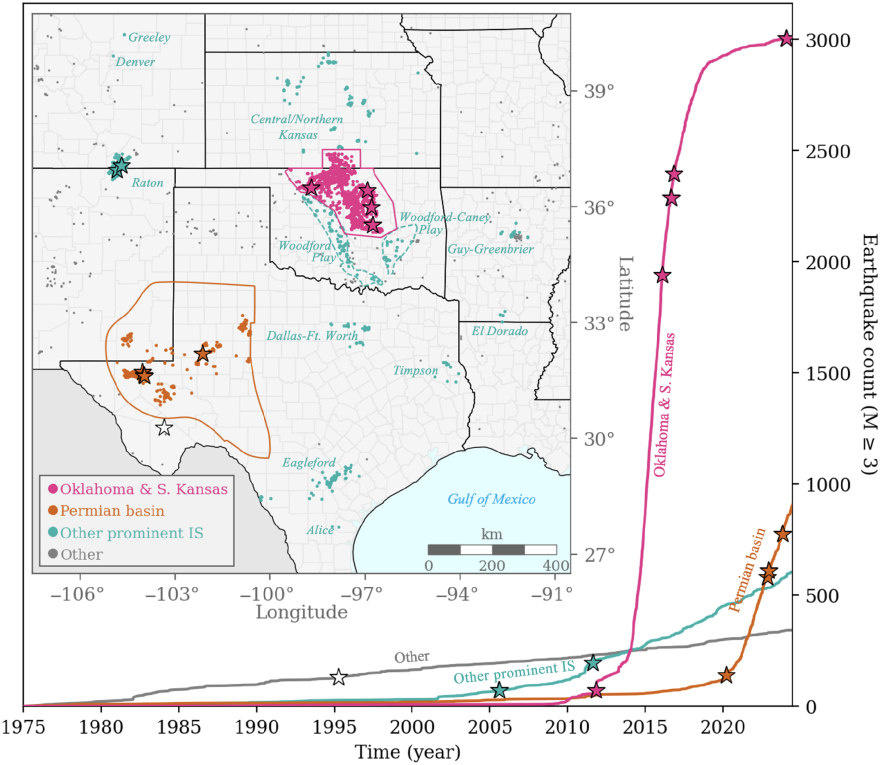A study from the U.S. Geological Survey used physics-based modeling to show the number of earthquakes in Oklahoma would have been more than four times higher in 2024 without mandates requiring more shallow wastewater injection depths in oil and gas production.
Injecting wastewater deep into the earth near the continent’s ancient Precambrian rock led to a higher rate of earthquakes, scientists say.
The elevated number of earthquakes, which peaked in 2015, led the Oklahoma Corporation Commission to mandate wells be plugged by layers of concrete. Although the rate of quakes in the state is still historically high, fewer have shaken the state following the rules and a slight decrease in oil and gas production.

“We've never done this kind of study on such a large, almost statewide scale,” said Robert Skoumal, USGS geophysicist and study author.
Scientists, industry and policymakers agree on the practice’s efficacy, Skoumal said, but it’s unclear how other states could use the findings.
“The next major question is, can we duplicate what's happened in Oklahoma to Texas and reduce the rates down there too?” Skoumal asked.
Human-driven earthquakes have increased in neighboring Texas, where the oil and gas industry is overseen by the Texas Railroad Commission. The earthquake levels there are still likely elevated beyond what the regulators aimed for, Skoumal said.
“We have the easy job of just studying the science,” he said. “The regulators have the tough job of deciding, ‘Okay, well, what do we do with that science?’”
StateImpact Oklahoma is a partnership of Oklahoma’s public radio stations which relies on contributions from readers and listeners to fulfill its mission of public service to Oklahoma and beyond. Donate online.






